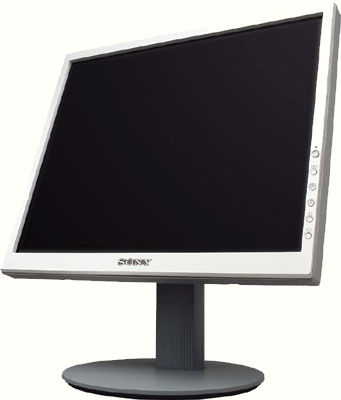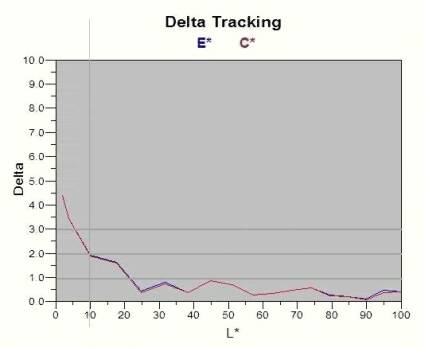Affordable 19" LCD Monitors
Sony SDM-S93
With its muted elegance, the SDM-S93 is attractive because of its simplicity and lovely black garb. And when turned on, its excellent viewing angles compensate for its ergonomic weaknesses: no height adjustment, no USB hub, no speakers, not even a DVI input. Thank goodness the transformer is integrated.
Compared to the 17" monitors in our previous test , what struck us was the really good visibility of the images, whether viewed from above or from one side. The difference is due to the fact that the earlier ones were built on panels using TN + Film technology, and the SDM-93 on a Fujitsu MVA panel. There is, however, a downside to this choice, as we shall see later.
Colors
On the right there is a button called ECO. Pressing it several times takes you through the hi, middle, low, and USER modes. We found that Middle gives a brightness of about 100cd/m², not unlike on a CRT, and Hi gives 150cd/m². But whatever setting you choose, this screen is not as bright as the others, which are mostly around 200cd/m².
For our adjustments, via the OSD we set the color temperature at 6500K with Gamma 2. We tested the Middle, Hi, and USER settings of the ECO button. The best results were obtained at ECO = Middle.
6500K
The profile can be downloaded below. Install it in C:\WINDOWS\system32\spool\drivers\color. Then you activate it by going to advanced display properties, then Color Management. Add the profile and select it as default.
Get Tom's Hardware's best news and in-depth reviews, straight to your inbox.
This is by far the best result. In ECO = Hi, there is a huge loss in the darks. Here, 90% of the colors (DeltaE <2) were adequately displayed, but only 78% (DeltaE <1) of them were perfectly displayed. Then you have to add the 5% darkest ones (DeltaE >3), which came, out poorly, and are in fact impossible to display on this monitor.
While it may not be bad, we can't help noticing that the definite quality gain on the last 17" monitors we tested is harder to achieve on the 19" ones, which are one or two years behind. The games tests also confirmed this.
At this point, it is interesting to mention that, apart from the interfaces, the Sony SDM-S93 and the Acer AL1931 have the same Fujitsu panel with the same reference. Only the electronics differ. Acer is the winner in this little contest. Its colors after calibration are truer than on the Sony.
On the other hand, the response time, crystal reaction and hence the picture in videos and games are the same. The results that follow therefore also apply to the Acer AL1931.


